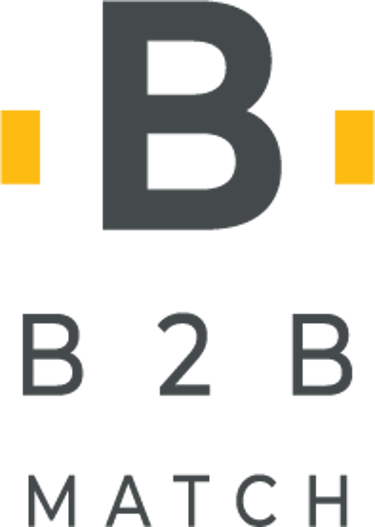What LEGO’s Turnaround Teaches Small Tech Companies About Winning Globally
Blog post description.
Benny Fluman
5 min read


What LEGO Can Teach Small Israeli Companies Selling Globally
Why a turnaround story from a global giant is surprisingly relevant to $5–20M tech companies with 10–30 employees
In the mid-2000s, LEGO was on the brink of collapse. One of the world’s most iconic brands a company beloved by children, parents, engineers, designers, and creators — was bleeding cash, losing focus, and drifting without a coherent strategy.
When Jørgen Vig Knudstorp took over as CEO in 2004, he did something almost counterintuitive: instead of expanding, he cut back. Instead of chasing every new opportunity, he returned the company to its core purpose helping children become creative thinkers.
Two decades later, LEGO is the most profitable toy company in the world.
But this isn’t a story about toys or plastic bricks. It’s a story about strategic clarity and it carries powerful lessons for small Israeli companies trying to sell globally: cyber, med-tech, drones, robotics, industrial technologies, and more.
The lesson is simple: Companies don’t fail because they are small. They fail because they lose focus.
This article breaks down what LEGO actually did using the 21-step framework by Matt Gray and then translates those ideas into highly practical guidance for small Israeli companies with global ambitions.
Part 1: What LEGO Actually Did — A Real Strategic Analysis Through the 21 Steps
When Knudstorp stepped into the CEO role, LEGO was everywhere: clothing lines, theme parks, video games, media, electronics, licensed products, and endless product variations.
The problem wasn’t marketing. It was strategy or more precisely, the absence of one.
1. Rediscovering Their Purpose
LEGO re-defined its mission: To inspire and develop the builders of tomorrow. This wasn’t branding. It became the filter for every decision.
2. Building a Moat That Isn’t Easy to Copy
LEGO’s advantage wasn’t the plastic brick it was the system. A precise, universal language of creativity that competitors couldn’t replicate quickly.
3. Simplifying to Drive Profitability
LEGO cut its product portfolio by nearly 50%. Complexity was killing the business. Simplification revived it.
4. Choosing a Beachhead Market All Over Again
Instead of trying to fight the video-game industry, LEGO reclaimed its core: Children aged 5–12. Only after stabilizing did the company expand again into adults, licensing, and advanced sets.
5. A Single Strategic Sentence
They summarized their entire strategy in one line: We win because we build builders. Every decision had to support this sentence.
6. Treating Bottlenecks, Not Symptoms
LEGO’s real problems weren’t marketing or innovation. They were operational chaos, too many parts, too many factories, and runaway costs.
Fixing those bottlenecks changed the company’s trajectory.
7. Turning Strategy into Everyday Language
The turnaround succeeded because the strategy became part of daily decision-making — simple, repeatable, memorable.
This shift powered one of the most impressive business recoveries of the 21st century.
Part 2: How Small Israeli Companies Can Apply These Lessons
This is where the LEGO case becomes directly relevant to small Israeli companies doing B2B sales around the world: cybersecurity, med-tech, drones, automation, industrial hardware, and emerging tech.
These are companies with: – Small teams – Limited budgets – Strong technology – And enormous pressure to grow globally
Here’s how LEGO’s turnaround translates into their reality.
1. Even a Small Company Needs a Clear Purpose Not a Tagline
Most Israeli companies know exactly what they make. Very few know why they exist.
Without purpose, everything becomes noise: more features, more markets, more target personas, more sales decks, more pilots.
Purpose isn’t branding. It’s a focusing tool.
A med-tech company doesn’t exist “to deliver innovative technology” it exists to shorten diagnosis time in emergency medicine. This clarity changes everything: product roadmaps, sales strategy, partnerships, and positioning.
2. Your Real Advantage Isn’t the Technology It’s the Perception
LEGO’s bricks weren’t the differentiator. The meaning behind them was.
The same is true for small tech companies: Customers buy clarity, confidence, efficiency, safety not algorithms.
Israeli companies often lean on technical language, but global buyers respond to perception: – “We reduce downtime.” – “We make security visible.” – “We turn aerial data into action.”
Technology is the engine. Perception is the steering wheel.
3. Simplicity Is a Strategy, Not an Aesthetic Choice
Small companies tend to overbuild: multiple product versions, dozens of features, custom requests for every prospect.
The result? Complex sales cycles, operational friction, unclear positioning.
LEGO proves that simplification is not a compromise it’s a competitive advantage. A simplified product is cheaper to sell, easier to support, and clearer to explain.
4. Don’t Conquer a Market Conquer a Beachhead
LEGO refused to fight Sony and Microsoft head-on. Instead, it doubled down on a segment where it could win disproportionately.
For small Israeli companies, this lesson is critical: Being “for everyone” globally is not a strategy.
For example: – A drone company shouldn’t try to be a “global drone platform.” It should dominate “roof inspection in Northern U.S. states.” A cyber company shouldn’t be “full enterprise security” it should win “OT threat detection for mid-size energy plants.”
A beachhead is the only way to achieve early global traction.
5. Fix the Real Bottleneck Not the Symptom
When sales are slow, most small companies hire more SDRs. When deals stall, they redesign the deck. When demos fail, they add features.
These are symptoms. The real bottleneck is almost always: unclear messaging an unfocused ICP a diluted value proposition or a fragmented product
LEGO fixed its operational bottleneck not its branding and the entire company recovered.
Small companies should follow the same discipline: Each quarter, identify one real bottleneck — and remove it completely.
6. Community Is a Moat, Even for Small Teams
LEGO discovered that AFOL (Adult Fans of LEGO) were not “fans” they were a strategic asset.
In B2B, community is even more powerful: A med-tech company can create a community of clinicians sharing real clinical cases. A cyber company can build a private intelligence group. A drone company can build a certified operator network across key countries.
Community lowers CAC and raises lifetime value and no competitor can copy it.
7. Use a Strategic Story People Can Remember
LEGO’s team didn’t walk around saying: “We aim to deliver synergies across global multi-channel ecosystems.” They said, “We build builders.”
A small company needs its own version one line that captures its strategic identity.
For example: Med-tech: “We win because we shorten diagnosis.” Cyber: “We win because we make threats visible.” Drones: “We win because we turn aerial data into decisions.”
This is not branding. It’s operational clarity.
Final Thought And Why This Matters Deeply
Small Israeli companies selling globally don’t need LEGO’s size or budget. But they do need LEGO’s discipline:
Focus accelerates growth Simplicity strengthens positioning Strategy is the courage to choose Community builds moats – A sharp message creates trust – A clear purpose aligns the team and the customer
LEGO rediscovered these principles when it was near collapse. Small companies don’t need to reach that point. They can make these decisions now before complexity overwhelms them.
Address
4/12 Gershon Sharshevski,
Mazkeret Batya, Israel


